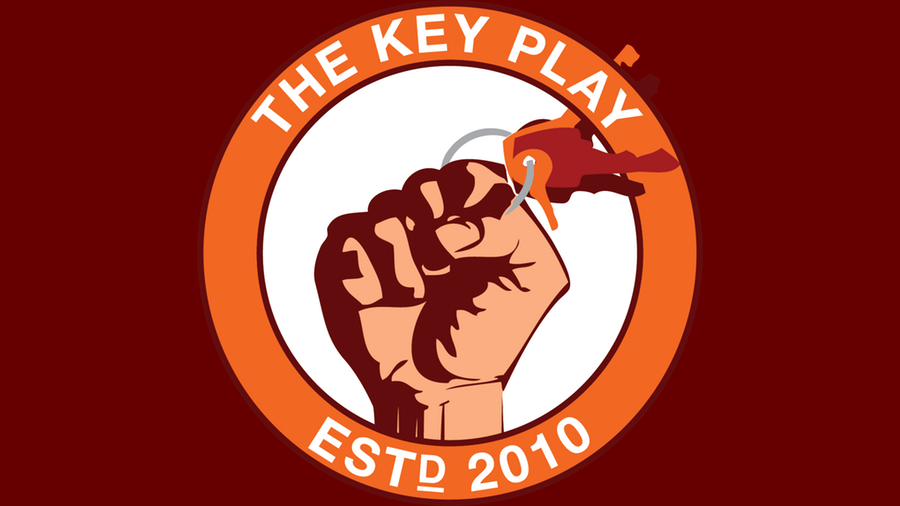Not only can the Hokies use the pistol to run veer, option, and play action, but they can also use the set to run their more traditional one back plays. The pistol allows for a quicker handoff, balanced backfield, and less movement for the quarterback.
On Saturday, we saw Michael Holmes carry the ball on a version of Tech's stretch play from the pistol formation. The same play Darren Evans and Brandon Ore excelled at from the one back set. The play is similar to the old Green Bay power sweep, and requires option blocking, which is determined based on the defensive alignment and is called out by the center before the play. Also, the Hokies can run it with a crack block by the flanker (a down block, often blindsided, on a scraping linebacker by a wide receiver) with the lead pulling lineman taking out the playside corner; or with the wide receiver blocking the corner and the lineman turning up on a safety or back inside on a linebacker. The goal of the play is to create, in the words of Vince Lombardi, "a seal here (on the pursuit) and a seal here (on the outside) and run the play in the alley."

Note: Again, we have used a basic 4-3 instead of a Georgia Tech 3-4, just in case Al Groh get's his game prep from reading blogs instead of watching film.
Pre-Snap
Hokies use two tight ends often on this play (I expect it will be Martin on the line and Malleck as the H-back, although they can also run it with Malleck on the line and Joey Phillips as the H back). For the sake of being provocative, let us assume Malleck and Phillips are on the field. The offense will line up in the pistol with Malleck on the line playside and Phillips lined up to the playside of Thomas (basically looking like an offset I formation except Thomas isn't under center). Phillips would then motion to an H-back position one yard behind and one yard outside of Malleck. From the same motion, we also saw the Hokies run the counter version of their read option, with Phillips pulling instead of Malleck.
At the snap assignments
Split end: Option Stalk
Left tackle: Scoop inside gap and then cut off the backside linebacker or end (depending on line call).
Left guard: Scoop the 1 technique defensive tackle (this is the 2nd challenging block on the play).
Center: Pull to outside the fullback's down block, and turn up. First odd colored helmet, trample him.
Right Guard: Scoop the 3 technique defensive tackle, preventing penetration to the outside. This is the most difficult block on the field, demonstrated by Jaymes Brooks getting blown up on David Wilson's 20 yard loss run in the Sugar Bowl.
Right tackle: Pulls playside, trampling the cornerback.
Flanker: Cracks back on the playside linebacker.
Quarterback: Opens up playside, hands off, then bootlegs backside.
Tailback: Takes a belly step play side then runs to daylight.
During the first team offense's first drive on Saturday, we saw this play executed to perfection, with Vinston Painter athletically getting to the cornerback, and Andrew Miller leveling the safety. Michael Holmes found the edge to get a solid gain, and then gained several tough yards after contact. It was an excellent example of a meat and potatoes grind it out play that can tire a defense, opening up seams for big plays on the veer. Also, with the same offensive line blocking but jet sweep motion by the flanker, the Hokies faked a jet sweep the other way, with Logan pitching to Tony Gregory. Gregory hit the hole going north/south at full speed as both Painter and Miller pancaked Hokie defenders for a beautiful touchdown run.


Comments
Please join The Key Players Club to read or post comments.
Please join The Key Players Club to read or post comments.
Why oh Why
Please join The Key Players Club to read or post comments.
Like this play
Please join The Key Players Club to read or post comments.
Please join The Key Players Club to read or post comments.
Please join The Key Players Club to read or post comments.